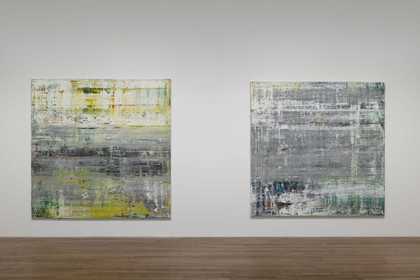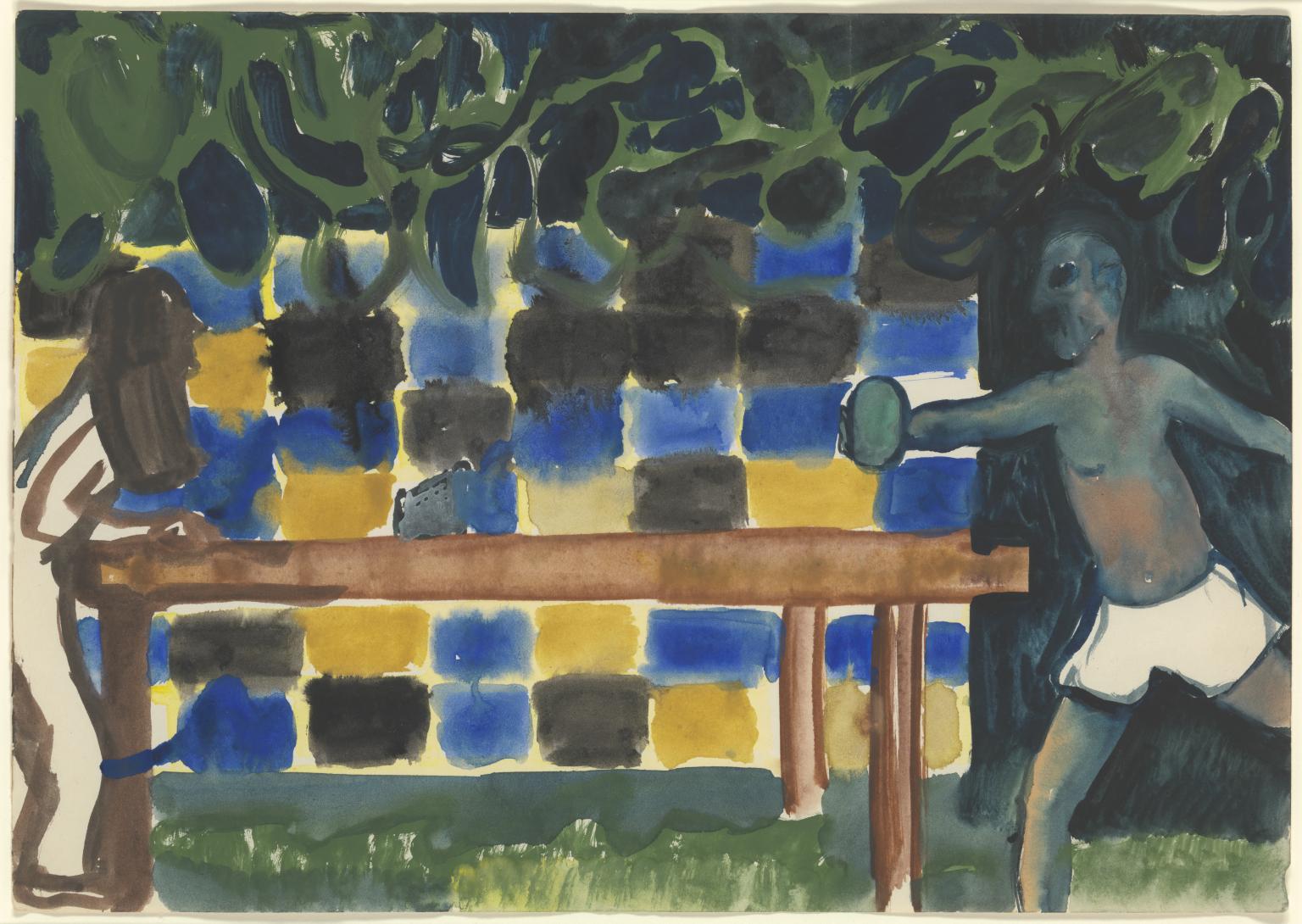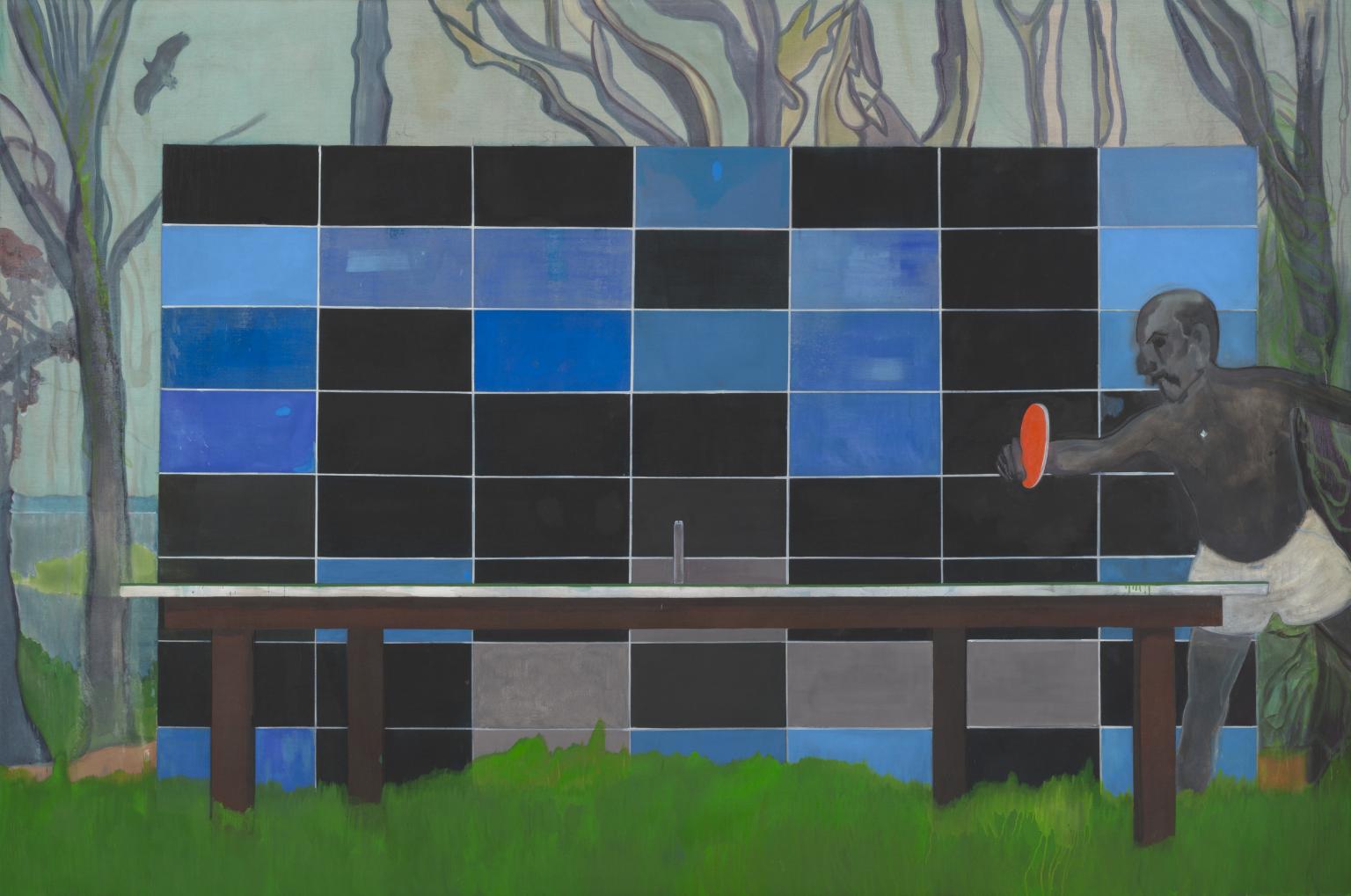The six paintings in this room were conceived by Gerhard Richter as a coherent group, named after the American experimental composer John Cage
Since the early 1980s, Richter has frequently made abstract works by applying layers of paint, and then wiping a squeegee across the surface. As the upper layers of paint are dragged across the canvas, earlier moments from the painting’s creation are allowed to resurface.
The Cage paintings are the outcome of several layers of painting and erasure. Their surfaces are animated by lines where the squeegee has paused, by brushstrokes, other scrapings, and areas where the skin of oil paint has dried and rippled. The paint seems delicate and fluid in some areas, coarser and more solid in others.
Richter was listening to the music of John Cage while he worked on these paintings and titled them after the composer. There are no direct links between any particular work in this series and any piece of music by Cage. However, Richter has long been interested in Cage’s ideas about ambient sound and silence, as well as his controlled use of chance procedures in musical composition.
Tate Modern
Natalie Bell Building Level 2 East
Room 11
1 February 2022 – 5 October 2025
Art in this room
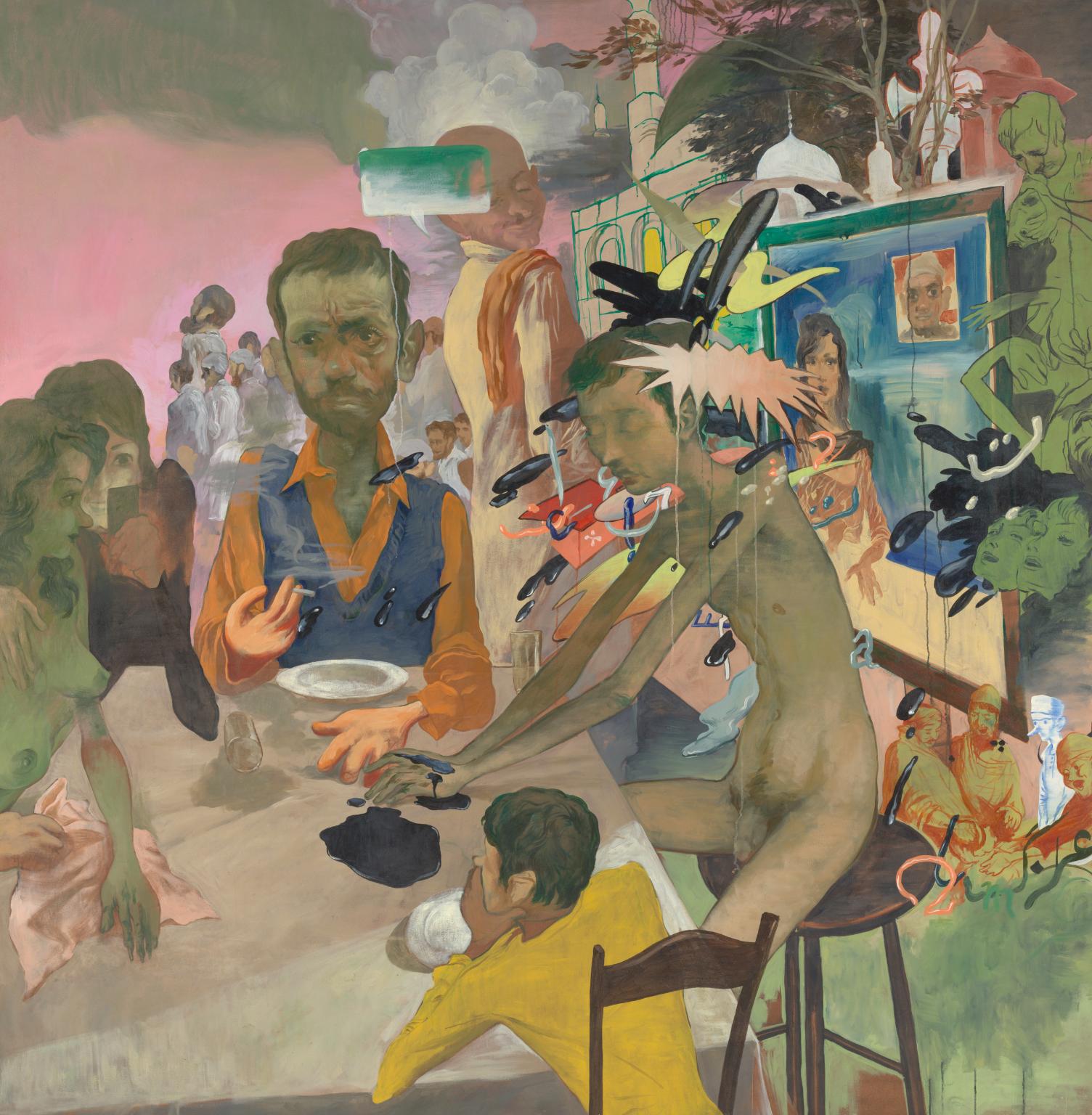
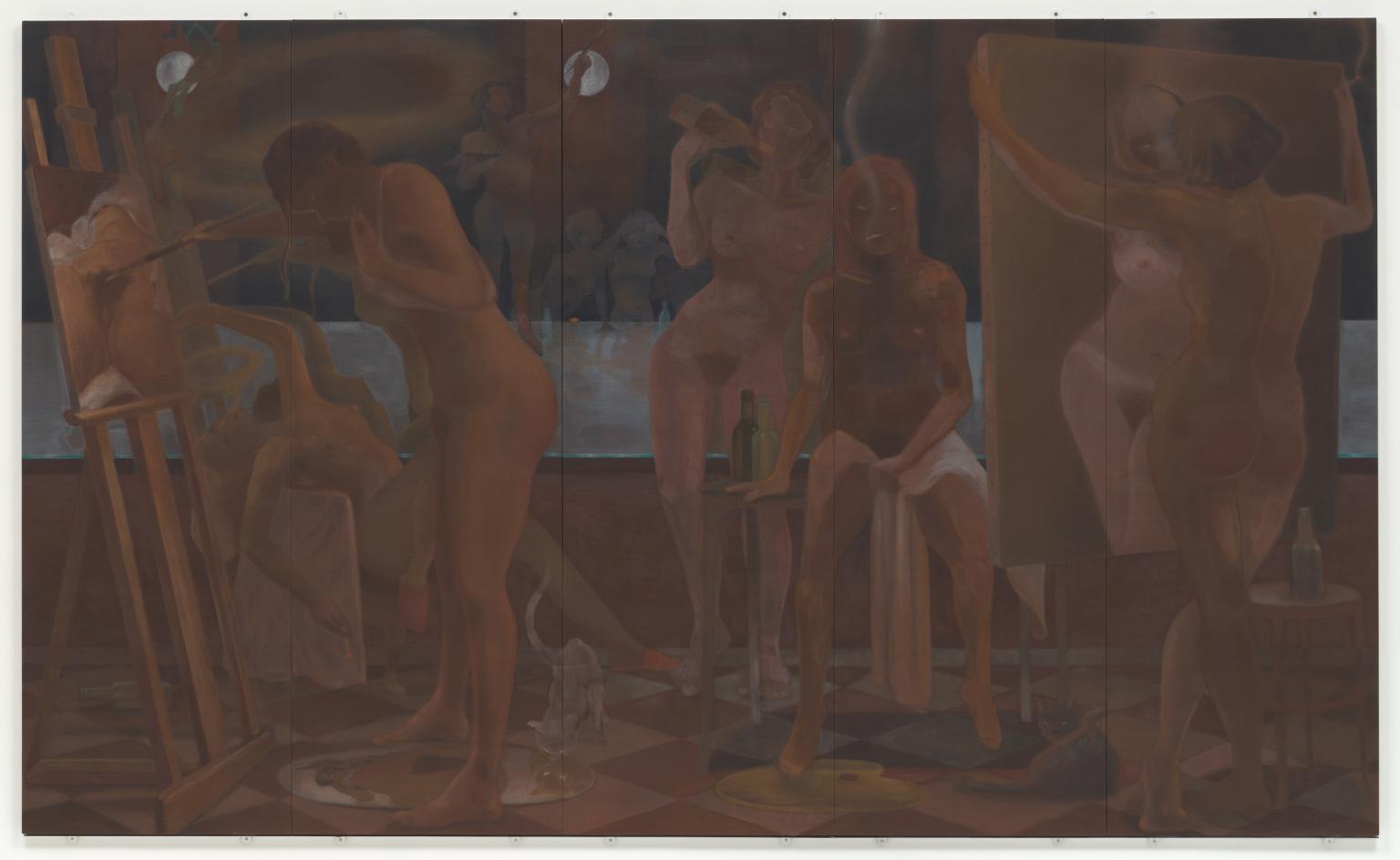



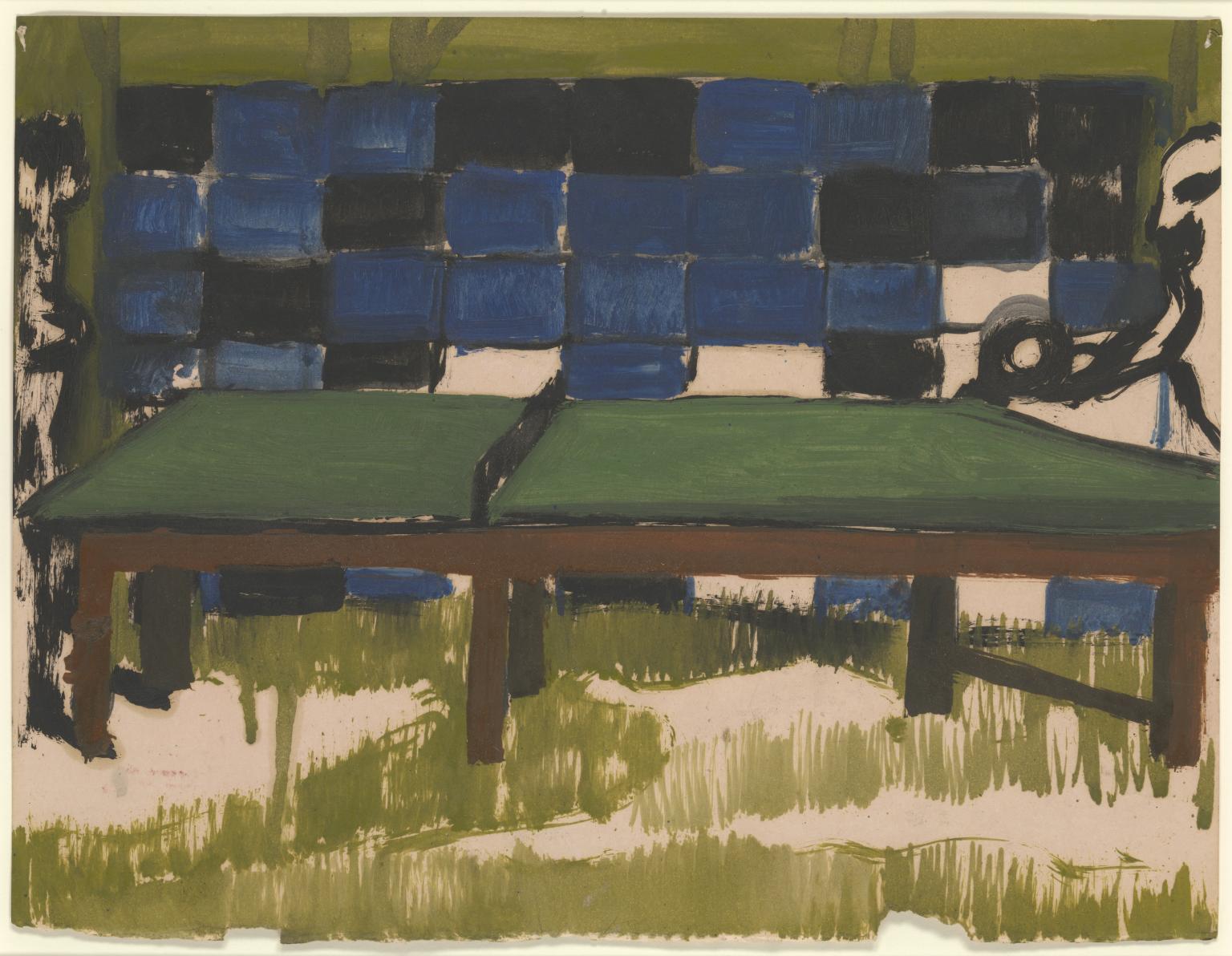
You've viewed 6/13 artworks
You've viewed 13/13 artworks

